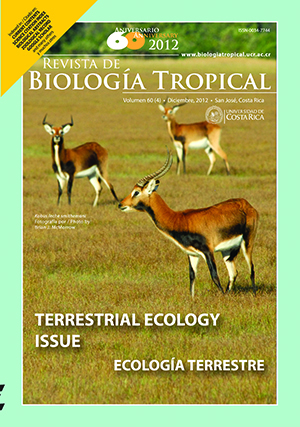Resumen
El análisis morfométrico ha servido como apoyo para explicar fenómenos ecológicos y evolutivos y para la clasificación de nuevas especies. Nosotros realizamos el análisis morfométrico de dos especies morfológicamente crípticas con el objeto de evaluar el grado de diferenciación intra e interespecífica. Se midieron 15 variables sobre 211 individuos pertenecientes a 18 localidades del centro de Argentina. Se encontró dimorfismo sexual en seis variables morfométricas en Odontophrynus cordobae y en tres variables en O. americanus. Se encontraron diferencias significativas entre especies en seis variables. El análisis discriminante incluyendo los individuos de todas las poblaciones relevadas para O. cordobae y O. americanus, mostró una clasificación positiva de los individuos dentro de su respectiva especie del 76.37%. En el análisis discriminante realizado con base en cuatro grupos (O. cordobae alopátrico y sintópico y O. americanus alopátrico y sintópico) se obtuvo una reclasificación de los individuos dentro de cada grupo del 73.45%. Las diferencias morfométricas entre especies fueron mayores en sintopía. Los resultados se alejan de los resultados esperados bajo la hipótesis del desplazamiento de caracteres y podrían sugerir que los caracteres morfológicos externos no tendrían una influencia importante en el reconocimiento y elección de machos coespecíficos por parte de las hembras.##plugins.facebook.comentarios##
Descargas
Los datos de descargas todavía no están disponibles.


